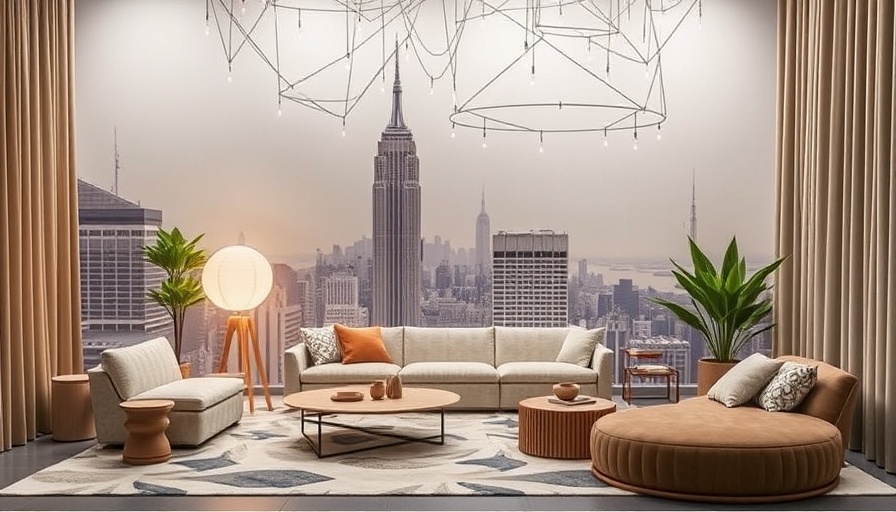
Understanding NYCxDesign 2025 Material Trends for Your Workspace
As NYCxDesign 2025 unfolds in New York City, the spotlight is on innovative materials that tell a story of both function and artistic expression. This annual showcase serves as a platform for designers to introduce new concepts that not only capture attention but also revolutionize how we think about our workspaces. Understanding these trends can help you make informed decisions when crafting a comfortable and aesthetically pleasing remote work environment.
Sculptural Designs: Shaping Comfort and Style
A standout trend this year is the emergence of sculptural designs that blur the lines between functional furniture and artistic pieces. Sam Klemick's captivating stool, crafted to mimic a bow, exemplifies this approach. The cylindrical base paired with the intricately detailed top piece not only elevates visual interest but also enhances comfort. The natural wood grain connects the viewer to the material's origins, encouraging a greater appreciation for craftsmanship.
Simulated Fabrics: Moving Beyond Conventional Materials
One of the most exciting developments is the use of simulated fabric in hard materials, employing trompe l'oeil techniques. Artists like Monica Curiel are leading the charge, transforming plaster into vibrant, flowing designs that mimic soft textiles. Such pieces challenge our perceptions of materials, making them perfect focal points in personal or professional spaces.
Lighting Innovations: Creating Mood Through Design
The lighting trends showcased at NYCxDesign reveal an exciting direction towards heavy diffusion through metallic grids. This is efficient not only for aesthetics but also for creating a conducive work environment. The Foreshadow Lamp by Ladies and Gentlemen integrates perforated sheet metal that serves to diffuse light while adding a complex visual texture. These designs not only appeal to the eye but can also help in moderating the natural light dynamics of your workspace.
Wall Coverings That Transform Spaces
In addition to furniture and lighting, wall treatments are also becoming more innovative. The Overture wallpaper collection by Lee Broom aims to recreate the look of flowing fabric across walls. Such designs can dramatically alter the ambiance of a room, making it feel cozier and more inviting—elements crucial for productivity in home offices.
Emotional Appeal: The Importance of Aesthetic in Workspaces
For digital nomads, the emotional connection to one’s workspace is vital. A beautiful and thoughtfully designed environment fosters creativity and reduces stress. The trends emerging from NYCxDesign serve to remind us that the materials we choose go beyond function; they can create emotional comfort that enhances our work experience.
Common Misconceptions About Design Materials
One misconception that tends to persist is that high-quality design must come at a steep cost. While investing in signature pieces often brings value, there are affordable options that capitalize on these current trends without compromising on style or functionality. Look for local artisans or smaller brands that incorporate these innovative design strategies into their offerings.
Actionable Insights to Enhance Your Workspace
To optimize your remote workspace, consider incorporating these 2025 material trends into your design choices. Look for furniture that doubles as art, choose lighting that diffuses well while adding texture, and select wall coverings that evoke warmth and comfort. By being intentional about your material choices, you can elevate not just the aesthetics but also the overall ergonomics of your workspace.
As you explore these trends, remember to prioritize comfort and functionality. The right materials can not only enhance productivity but also create a work environment that inspires and motivates you.
Ready to upgrade your workspace with these new material trends? Dive into thoughtful design choices that resonate with your personal style and needs—your productivity will thank you!
 Add Row
Add Row  Add
Add 




Write A Comment